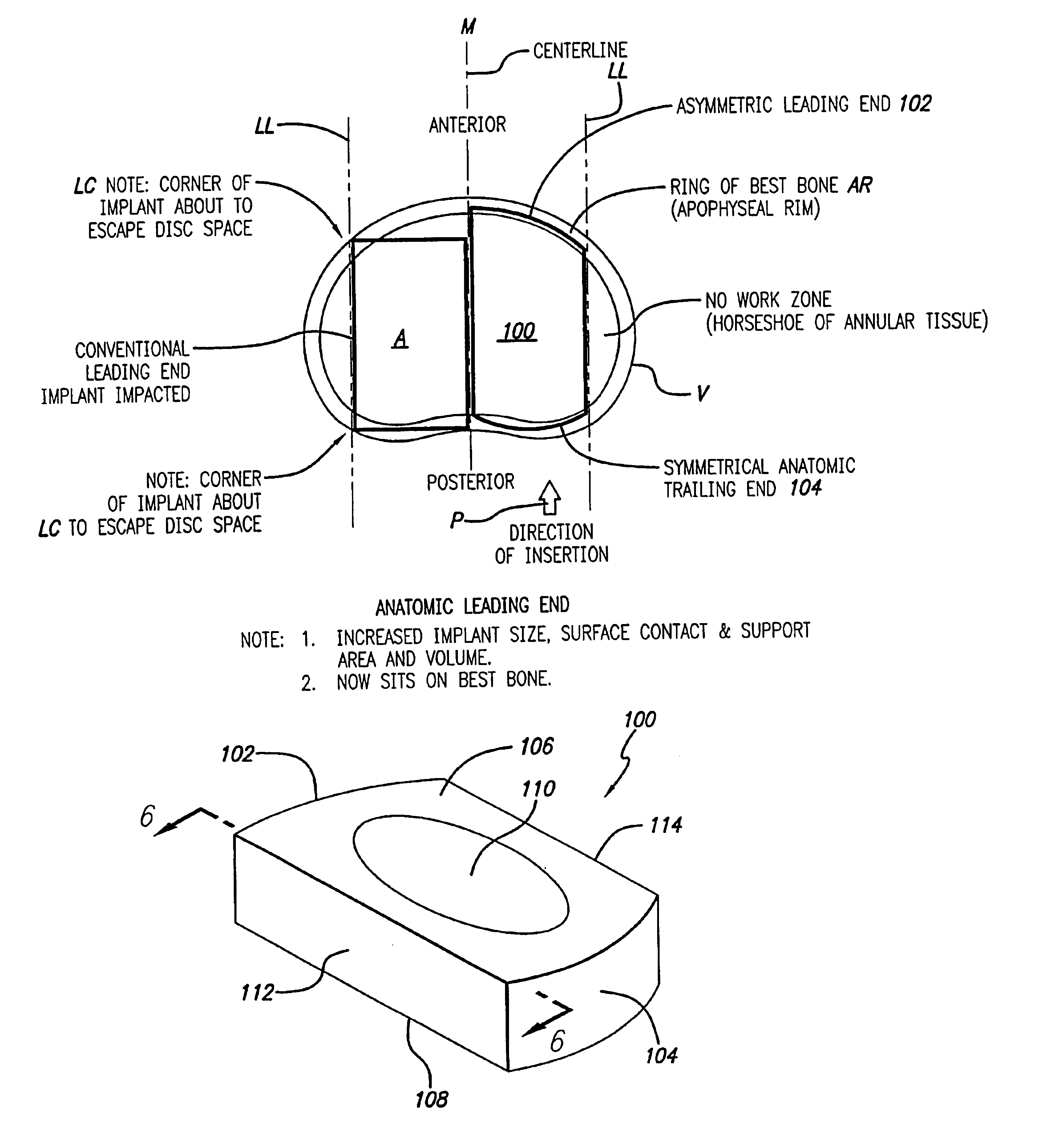Bone hemi-lumbar interbody spinal fusion implant having an asymmetrical leading end and method of installation thereof
- Summary
- Abstract
- Description
- Claims
- Application Information
AI Technical Summary
Benefits of technology
Problems solved by technology
Method used
Image
Examples
Embodiment Construction
[0041]FIG. 4 shows an embodiment of the present invention comprising an interbody spinal implant generally referred by the numeral 100, inserted in the direction of arrow P from the posterior aspect of a vertebral body V on one side of the centerline M in the lumbar spine. In a preferred embodiment of the present invention, the implant can be made of bone that is either in a naturally occurring state, or can be made of a composite material comprising bone particles. In a naturally occurring state, the implant can be manufactured from a piece of bone obtained from a major long bone or other suitable source and can include bone dowels and diaphyseal bone rings, for example. Alternatively, the implants can be manufactured from a composite of bone made up of cortical fibers, bone filaments, bone particles, as examples. In addition to bone, the composite may also include a material which may or may not be bioactive and / or bioresorbable such as a plastic, ceramic, or other. Once formed, t...
PUM
| Property | Measurement | Unit |
|---|---|---|
| Length | aaaaa | aaaaa |
| Radius | aaaaa | aaaaa |
Abstract
Description
Claims
Application Information
 Login to View More
Login to View More - R&D
- Intellectual Property
- Life Sciences
- Materials
- Tech Scout
- Unparalleled Data Quality
- Higher Quality Content
- 60% Fewer Hallucinations
Browse by: Latest US Patents, China's latest patents, Technical Efficacy Thesaurus, Application Domain, Technology Topic, Popular Technical Reports.
© 2025 PatSnap. All rights reserved.Legal|Privacy policy|Modern Slavery Act Transparency Statement|Sitemap|About US| Contact US: help@patsnap.com



